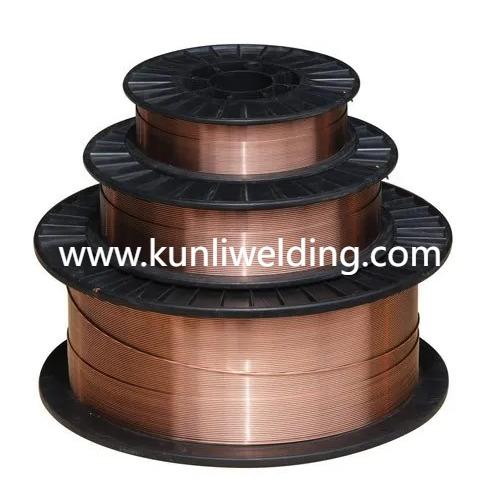What handling practices protect braided aluminum wire during high volume assembly

Thin aluminum welding is a balancing act between heat control, filler choice and operator technique, and shops often consult Aluminum Tig Wire Suppliers when specifying materials and handling rules. Selecting the right wire matters more than many expect because the filler influences arc stability, puddle responsiveness and how much cleanup will be needed after the weld.
Start with the application and the base metal. Thin sheet work demands a wire that supports a small, controllable puddle so travel speed and heat input remain manageable. Some alloys deposit metal that flows readily while keeping the puddle narrow. For visible seams and parts that receive a finish, choose a filler that accepts the selected coating and does not create problematic transitions at the heat affected zone. Thinking ahead about finishing reduces rework and helps maintenance planning once parts enter service.
Wire diameter is a practical lever. Smaller diameters feed with less stored energy and produce a finer deposition rate that suits narrow joints and thin sections. They allow welders to react quickly to changes in travel speed and torch angle. Larger diameters increase deposition rate but also make puddle control harder on thin gauge panels. Many shops choose a small selection of wire diameters so crews can switch quickly between repair tasks and production runs without frequent spool changes.
Shielding gas influences arc shape and cleanliness. A stable inert environment preserves puddle clarity and reduces oxygen related porosity. In many TIG operations a constant inert gas flow that maintains a calm envelope over the weld area helps the operator see the joint and manage the torch precisely. If the site has drafts or outdoor exposure, simple wind breaks and gas lens accessories preserve the shielding envelope so weld quality does not suffer from passing gusts.
Feeder and torch ergonomics matter for handheld TIG work. Lightweight spool feeders or short flyer systems reduce the carrying burden and improve control for welders who work on vertical or awkward panels. A smooth feed path, correctly sized liner and clean drive roll prevent bird nesting and feed hesitation that otherwise force abrupt arc changes and create defects. Keep spare liners and drive rolls close at hand so a worn part does not stall a sequence of delicate welds.
Surface cleanliness is non negotiable. Aluminum forms a tenacious oxide that interferes with fusion when not removed. Mechanical brushing using a dedicated tool and a clean staging area reduces surface contamination. Avoid solvents that leave residues and use appropriate cleaning swabs where needed. For visible work practice a final wipe and a short tack sequence so geometry remains stable while heat is distributed. Clean fit up and tidy tacking reduce the need to grind and dress finished seams.
Pilot tests speed qualification. When a new spool arrives run a short sample weld that uses the actual feeder path torch and joint geometry. Photograph the pilot bead and record power settings stick out and travel speed so future coils can be set up in the same way. Pilot evidence shortens the time to full production and removes guesswork from acceptance conversations with suppliers.
Consider spool packaging and on site storage. Coils that arrive with secure inner wraps and clear spool marking resist moisture and abrasion through transit. At the job site keep unopened coils sealed and open only the quantity needed for the shift. Store spools off concrete and away from chemical exposure to avoid invisible films on the wire surface that later cause pores. Simple handling measures like clean gloves and capped ends when a spool is not in use reduce operator transferred oils and salts.
Operator technique and short training sessions preserve consistency. Thin aluminum TIG work rewards steady hand posture small changes in stick out and consistent travel rhythm. Brief refresher sessions keep crews aligned on the chosen acceptance sample and reduce variation between shifts. Pair training with a few quick audits so drift is detected early and corrected with minimal disruption.
Supplier guidance is a practical asset. Many Aluminum Tig Wire Suppliers publish starting parameters feeder notes and handling guidance that match a wire to common torch setups. When procurement asks for those notes and includes a small pilot order before larger shipments, shops gain predictable starting points and reduce sample coil consumption. A supplier that supports pilot testing and documents packaging methods shortens qualification cycles and helps projects stay on schedule.
Finally think about the environment in which the part will serve. If the welded assembly will see coastal exposure or repeated wet dry cycles ensure the filler choice and finishing plan align to avoid crevice or coating adhesion problems. If the part is for an electrical enclosure consider weld cleanliness and post weld finishing that preserve conductive paths where needed. Matching filler to service conditions reduces long term maintenance and keeps inspection intervals realistic.
Choosing the right aluminum TIG wire for thin metal welding combines selection of wire diameter and alloy with good shielding practice careful handling and disciplined pilot testing. When shops work with informed suppliers and adopt tidy storage and feeder routines the result is fewer defects and a smoother path from pilot to production. For product pages handling notes and suggested starting parameters that support pilot planning visit the application and technical information available at https://www.kunliwelding.com/product/aluminum-alloy-wire/aluminum-alloy-welding-wire.html .
- Art
- Causes
- Crafts
- Dance
- Drinks
- Film
- Fitness
- Food
- Games
- Gardening
- Health
- Home
- Literature
- Music
- Networking
- Other
- Party
- Religion
- Shopping
- Sports
- Theater
- Wellness
